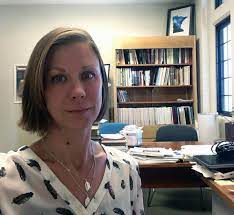Affiliation: University of Toledo

Melissa Baltus is Associate Professor at the University of Toledo. She holds degrees in Anthropology (Ph.D. and M.A.) from the University of Illinois; Anthropology (B.A.) from Minnesota State University. Her area of specialization is North American Archaeology, specifically the Cahokia/Mississippian period. In 2018, Professor Baltus received the University of Toledo Recognition for Outstanding Contributions to University Scholarship and Creative Activity. Her most recent publications include “Communities in Conflict” in Reconsidering Mississippian Households and Communities (A. Betzenhauser and E.W Malouchos, eds., 2021).
The neighborhoods of ancient Cahokia tell its stories. Their similarities and differences provide invaluable insight into the processes of urbanization, as well as the ways in which lived lives shaped the urban landscape. Much of what we know about Cahokia’s neighborhoods derives from salvage excavations in or near the core of “downtown”. These excavations demonstrate planned site organization, dynamic neighborhood uses, and varying relationships between politico-religious practices, landscape features, and domestic spaces. Describing the development and depopulation of Cahokia through its neighborhoods, I will contextualize the findings of a recent multi-year project at one area of Cahokia and what we have learned about the city from this newly explored neighborhood.
After more than a century of urban occupation, the city of Cahokia experienced a series of rapid material transformations that appear to be a deliberate attempt to change Cahokian politics. These changes transpired in locally unique yet regionally related ways at Cahokia and its surrounding settlements. There are two important aspects of change that took place during this mid-point of Cahokia’s existence: 1) the intentional termination of specific building and pottery types; and 2) the return to certain pre-Cahokian practices, including decentralized, local events. I’ll explore these transformations at the city in relation to excavations at a related mound site that was built and occupied subsequent to these major changes.